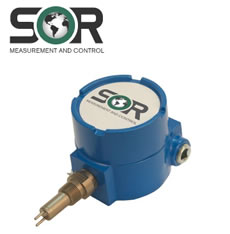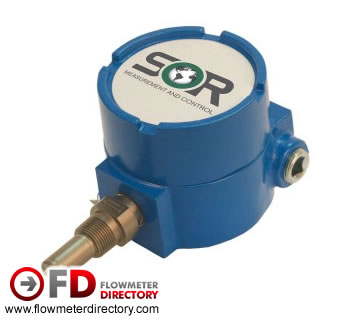Thermal Differential Switches use a thermal differential technique to measure liquid flow, level or interface by sensing changes in the thermal heat transfer characteristics of the media where it is located. The sensor consists of a pair of matched Resistance Temperature Detectors (RTDs) encased in twin 316 series stainless steel tubes. One RTD is self heated using a constant DC current.

{loadposition fd-01header}
Thermal Differential Flow Switch
Overview
Thermal Differential Switches use a thermal differential technique to measure liquid flow, level or interface by sensing changes in the thermal heat transfer characteristics of the media where it is located. The sensor consists of a pair of matched Resistance Temperature Detectors (RTDs) encased in twin 316 series stainless steel tubes. One RTD is self heated using a constant DC current.
The other sensor is unheated and provides an accurate ambient process temperature reference. The thermal differential created between the heated and reference RTD pair is a function only of the media with which the sensor is in contact. The differential is greatest when no liquid is present (dry condition) and decreases as liquid quenches the switch sensors (wet condition).
- Wide operating process temperature range of -100 to 392°F
- Removable, plug-in electronics board
- Free of all moving parts that can stick, coat or fail
- Self-heating sensor design
- Application flexibility
- Simplifies wiring
- High reliability
- Improves response time and sensor durability






